Wildflowers of the Adirondacks:
Trout Lily (Erythronium americanum)
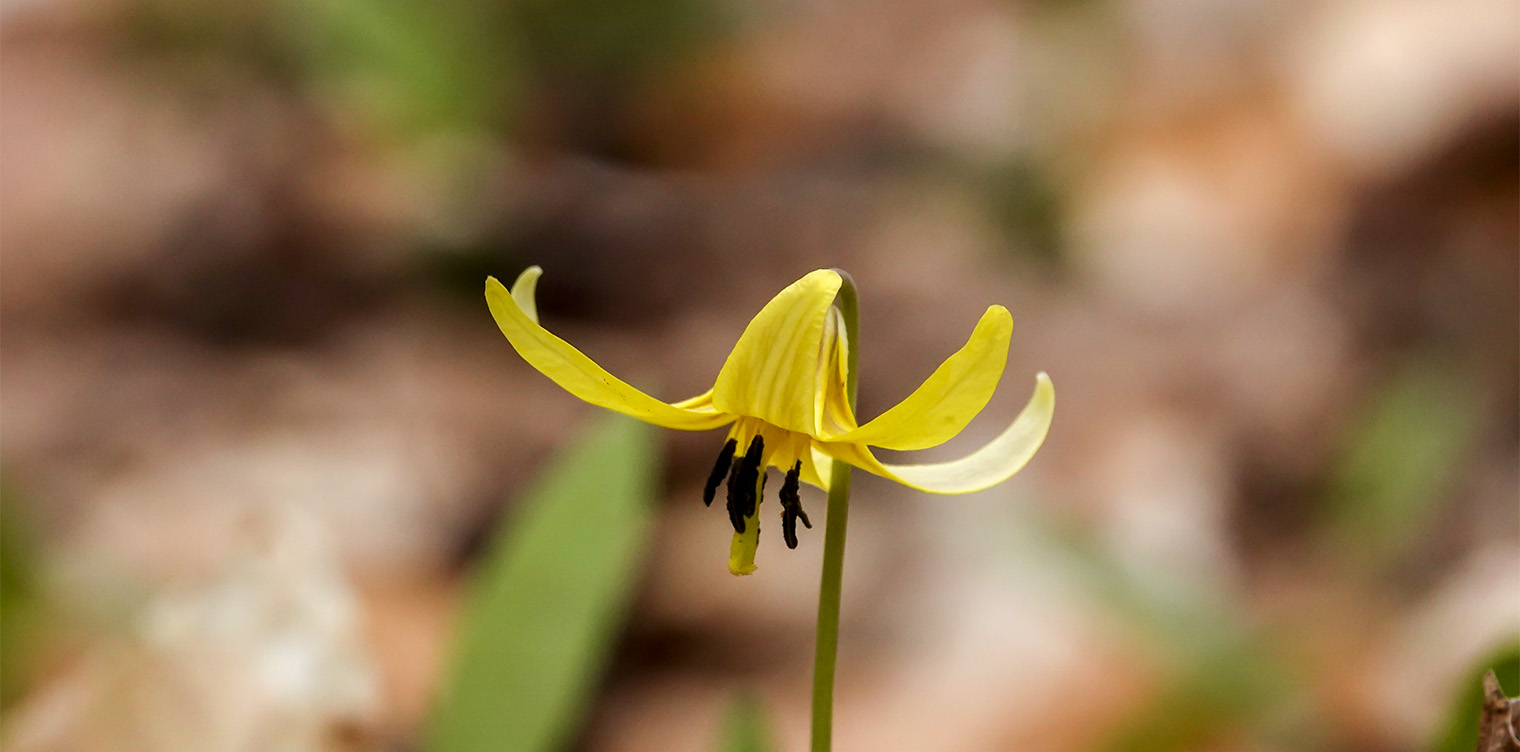
The Trout Lily (Erythronium americanum) or Dog Tooth Violet is a small yellow wildflower which grows in northern hardwood forests in the Adirondack Mountains of upstate New York. A spring ephemeral, it blooms, produces fruit, and dies back before the canopy trees leaf out.
This plant is a member of the Lily family (Liliaceae) – a family which also includes Clintonia, Indian Cucumber-root, and Rose Twisted Stalk. The Trout Lily is one of two plants in the Erythronium genus that occur in New York State. The other is Erythronium albidum Nutt (White Trout Lily), which occurs on the periphery of the Adirondack Park, in Oneida and Washington counties.
- The genus name (Erythronium) is taken from an unrelated European plant. The species and sub-species name (americanum) refers to America. The author name (Ker Gawl.) is a tribute to British botanist John Bellenden Ker, born John Gawler and also known as Ker Gawler.
- The nonscientific name (Trout Lily) is a reference to the mottled leaves, which are said to resemble the markings on trout. Other common names for the plant include Yellow Trout Lily, Eastern Trout-lily, Trout-lily, Fawn Lily, American Trout-lily, Yellow Trout-lily, Adder's Tongue, and Yellow Adder's Tongue. Although Trout Lilies are not violets, they are also known as the Dogtooth Violet, Dog-tooth Violet, or Yellow Dog-tooth Violet, referring to the tooth-like shape of the white underground bulb.
Identification of Trout Lilies
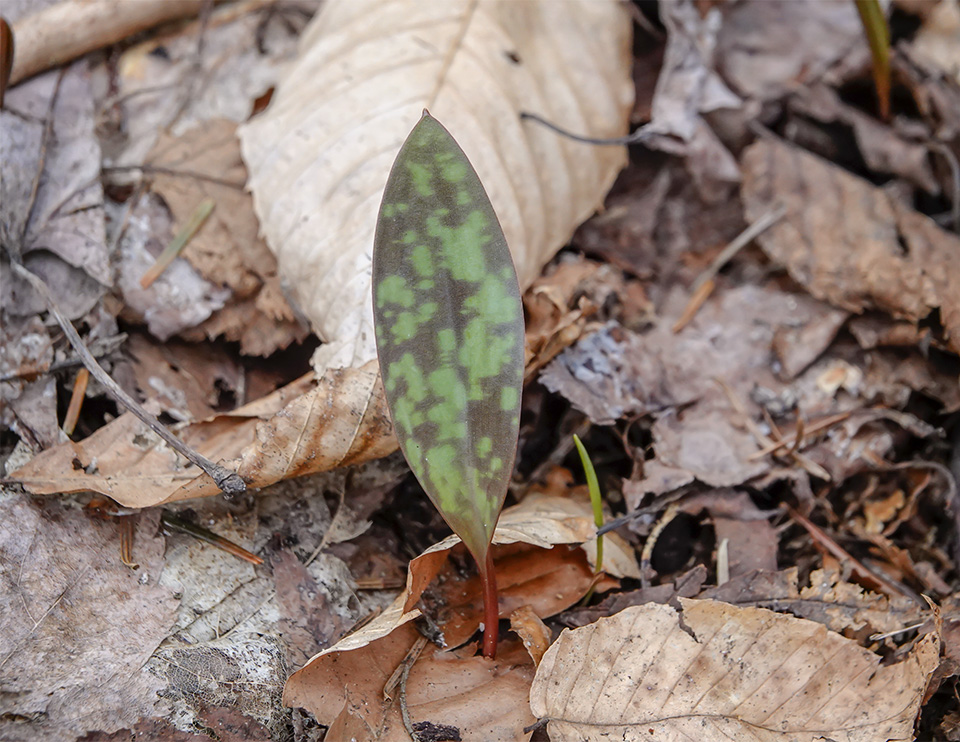
The Trout Lily is a spring ephemeral – perennial woodland plants that sprout from the ground early each spring. All the above-ground action takes place between snow melt and full leaf-out of deciduous trees.
- Spring ephemerals quickly bloom and seed before the canopy trees overhead leaf out.
- Once the leaves of the canopy trees above have leafed out and the forest floor is deep in shade, the leaves of spring ephemerals wither away leaving just the roots, rhizomes, and bulbs underground.
This strategy allows Trout Lilies and other spring ephemerals, like Carolina Springbeauty, Dwarf Ginseng, Dutchman's Breeches, and Squirrel Corn, to take advantage of the full sun hitting the forest floor early in the growing season.
Trout Lilies are small plants, growing up to about eight inches tall. The root system consists of a cormCorm: A rounded underground storage organ present in some plants, consisting of a swollen stem base covered with scale leaves., with fibrous roots and stolons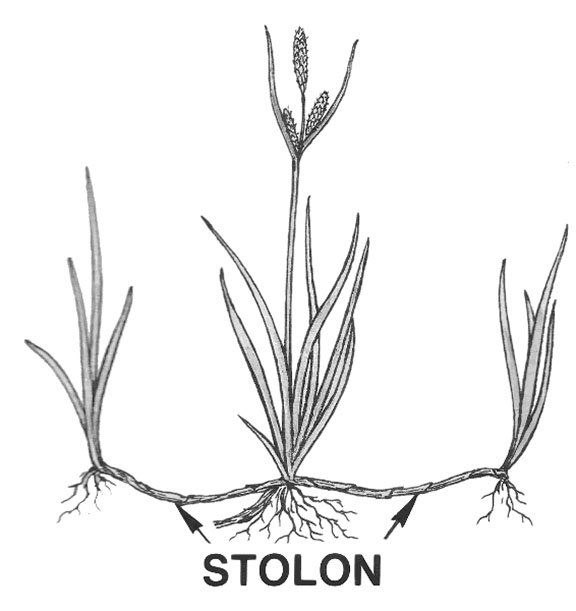 Stolon: A horizontal stem growing along surface or just above or below the ground, rooting at intervals and giving rise to new plants. that create offshoots from the mother plant, resulting in colonies of plants.
Stolon: A horizontal stem growing along surface or just above or below the ground, rooting at intervals and giving rise to new plants. that create offshoots from the mother plant, resulting in colonies of plants.
The leaves of the Trout Lily are elliptic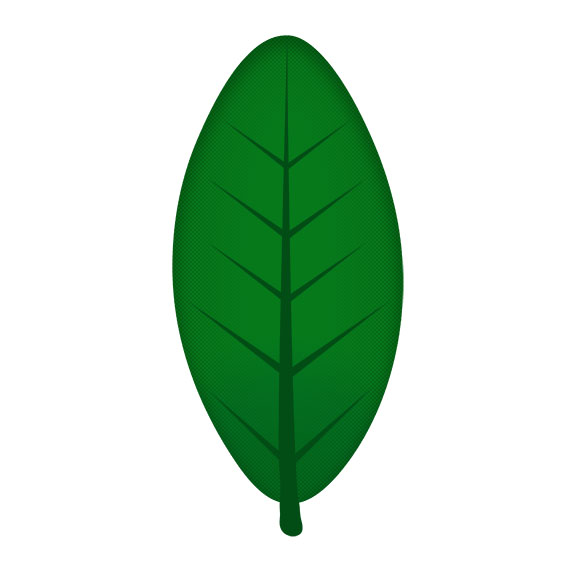 Elliptic: A leaf shaped like an ellipse, widest at the center and tapering at each end. or lance-shaped
Elliptic: A leaf shaped like an ellipse, widest at the center and tapering at each end. or lance-shaped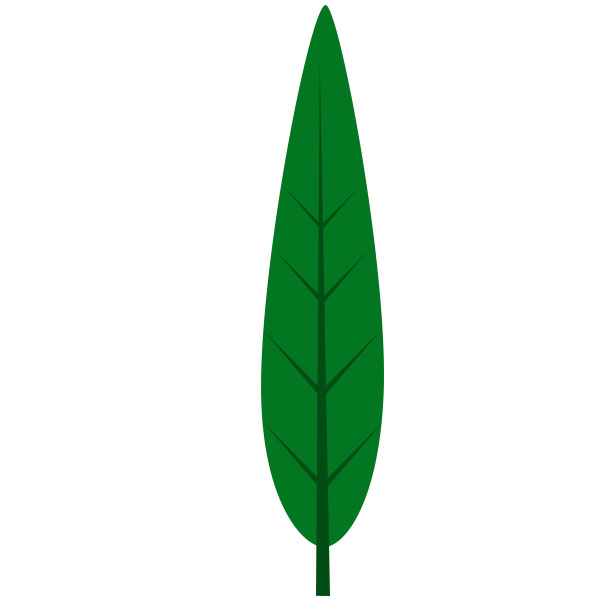 Lanceolate (lance-shaped): A leaf shaped like a lance head, tapering to a point at each end. and mottled with brown, reddish-brown, or purplish-brown. Flowering plants have two basalBasal: Leaves are confined to the base of the stem. leaves, meaning that they emerge from the bottom of the plant. The leaves are 2½ to 6" long and ½ to 2" across. The edge of the leaf is entire or smooth
Lanceolate (lance-shaped): A leaf shaped like a lance head, tapering to a point at each end. and mottled with brown, reddish-brown, or purplish-brown. Flowering plants have two basalBasal: Leaves are confined to the base of the stem. leaves, meaning that they emerge from the bottom of the plant. The leaves are 2½ to 6" long and ½ to 2" across. The edge of the leaf is entire or smooth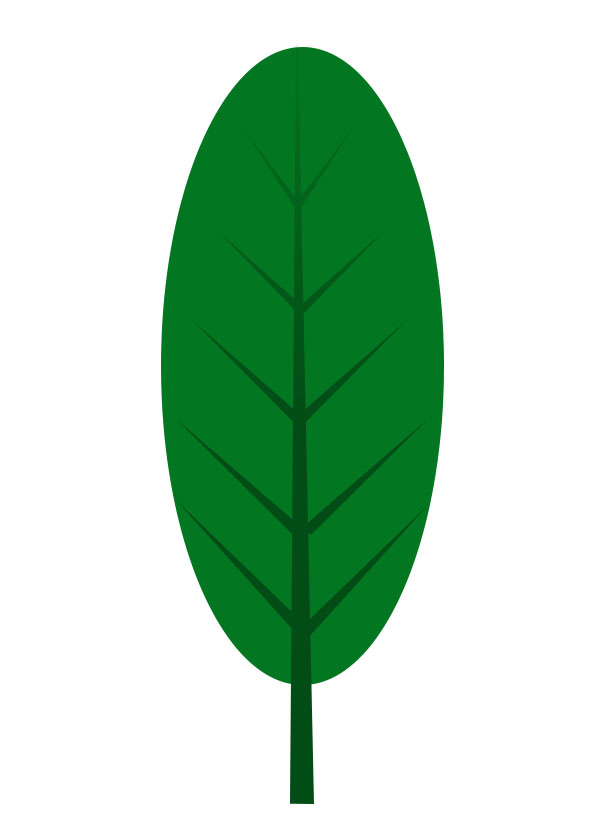 Smooth leaf edges do not have any teeth., meaning that the edges are not toothed
Smooth leaf edges do not have any teeth., meaning that the edges are not toothed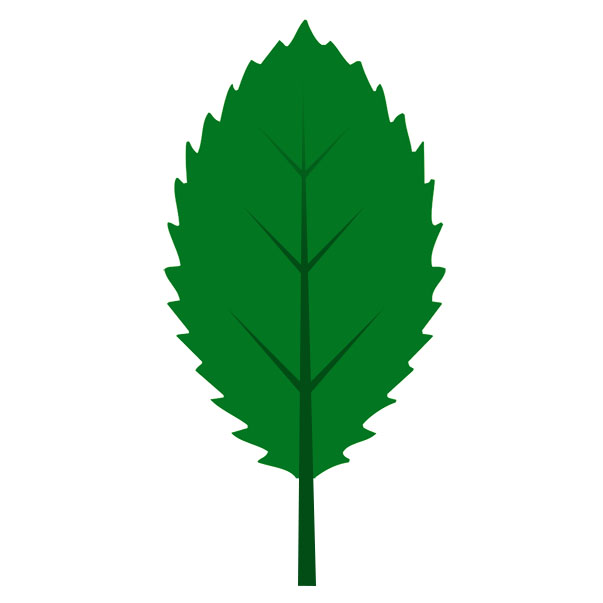 Toothed: Leaves which have a saw-toothed edge.. Single-leaved plants also occur, but do not flower.
Toothed: Leaves which have a saw-toothed edge.. Single-leaved plants also occur, but do not flower.
In the Adirondacks, we usually see the first leaves of the Trout Lily in mid- to late-April. A tally for the upland Adirondack areas compiled by Michael Kudish, based on data collected from the early seventies to the early nineties, lists the earliest date for the appearance of leaves as 5 April and the latest date as 1 May, with a median date of 13 April.
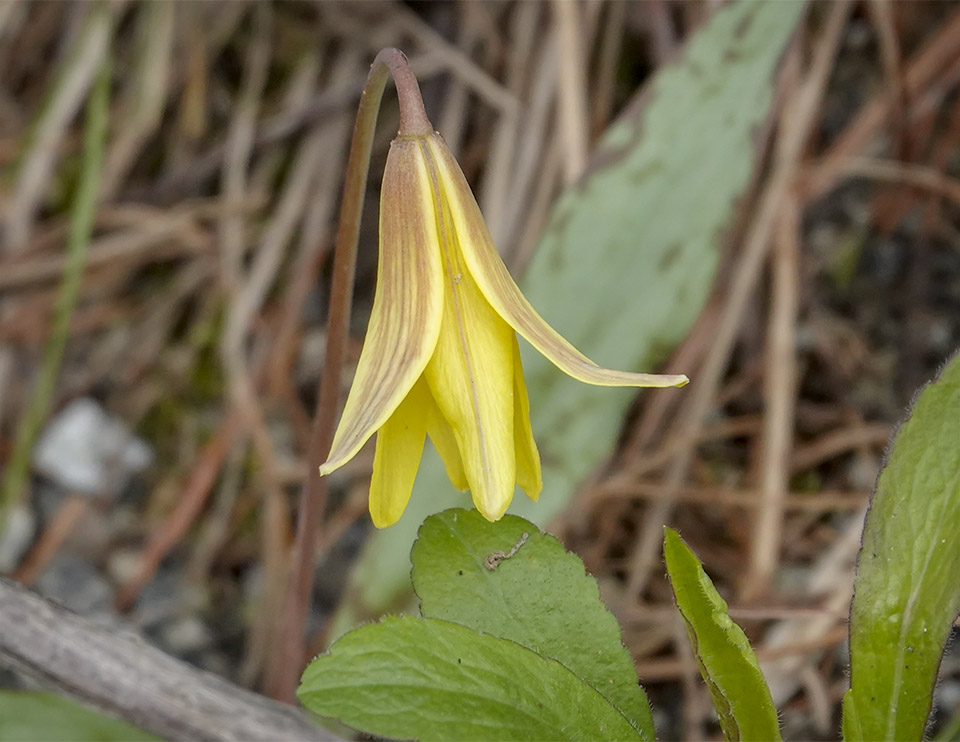
The yellow flowers are solitary and nodding, appearing at the end of the single stem. The flowers are about an inch wide. They are sometimes tinged with purple or reddish brown on the outside of the petals. The flowers have six stamens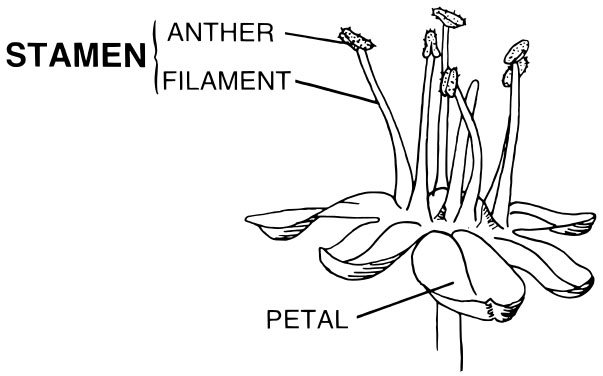 Stamen: The male part of the flower, made up of the filament and anther. (about ½" long) in the center, usually tipped with yellow or deep rusty red anthers
Stamen: The male part of the flower, made up of the filament and anther. (about ½" long) in the center, usually tipped with yellow or deep rusty red anthers.jpg) Anther: the part of a stamen that contains the pollen.. The petals flare out and back.
Anther: the part of a stamen that contains the pollen.. The petals flare out and back.
In the Adirondack Park, Trout Lilies generally flower in early to mid-May. Kudish's tally of flowering dates, based on data collected from the early seventies to the early nineties, lists the earliest flower date as 18 April and the latest date as 17 May. These dates are roughly consistent with more recent flowering dates. The list of iNaturalist observations from the spring of 2021, however, included somewhat earlier flowering dates, beginning in mid-April.
The flowers are replaced by fruit, which take the form of seed capsules about ½ to ¾ inch length. The capsule starts out as green, changing to brown and splitting open into three sections to expose the crescent-shaped seeds. Fruit usually appears in late May in the Adirondack region.
Trout Lilies can be distinguished from the other member of the Erythronium genus that occurs in the Adirondack Park – White Trout Lily – by the color of the flowers. White Trout Lily, as the name implies, has white flowers tinged with pink, blue, or lavender.
Uses of Trout Lilies
Trout Lilies have limited uses as food. Several sources suggest that the very young leaves or corms can be used as a cooked vegetable, but advise limiting harvesting to large colonies. One source cautions that all parts of the plant, including the bulb and fresh leaves, are strongly emetic and should not be used internally.
This plant does not appear to have been used extensively by native Americans for medicinal purposes. The Cherokee used the juice from warmed leaves for wounds and an infusion of the root for fever. The Iroquois used a poultice of smashed roots for swellings. One source indicates that skin contact with the corms has been known to cause dermatitis in sensitive individuals.
Wildlife Value of Trout Lilies
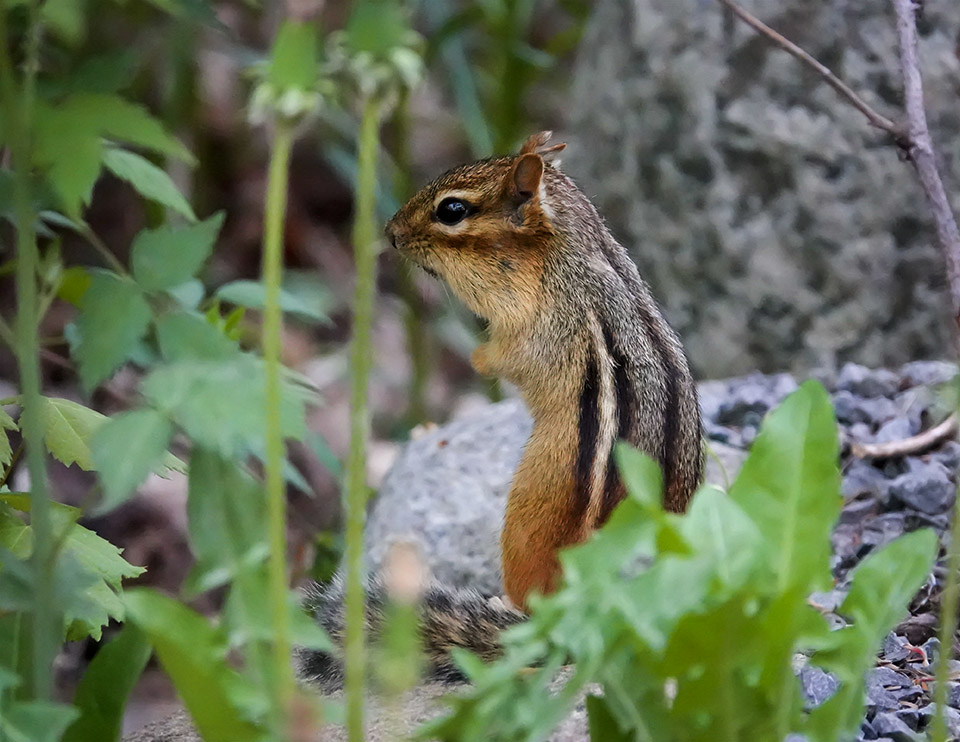
Trout Lilies have limited wildlife value. The leaves are small and inconspicuous, so they attract White-tailed Deer only to a limited extent, although deer reportedly eat the seed capsules. Black Bears are said to dig up the corms to consume. A study of feeding behavior of Eastern Chipmunks in the Adirondacks found that Trout Lily are a mainstay of the chipmunk's diet.
Trout Lily flowers attract long-tongued insects, especially bees. Other insect visitors include blowflies and butterflies, such as sulphurs and whites. Ants are attracted to the fleshy protuberances on the outside of the seeds.
Distribution of Trout Lilies
Trout Lilies occur in the eastern part of the US and Canada, from southern Ontario to Minnesota, south to South Carolina, Georgia, and Tennessee. This species is listed as Threatened in Iowa.
Trout Lilies can be found in most New York State counties, with the exception of several in the southern part of the state. This plant has been documented in all counties within the Adirondack Park Blue Line, except Clinton County.
Habitat of Trout Lilies
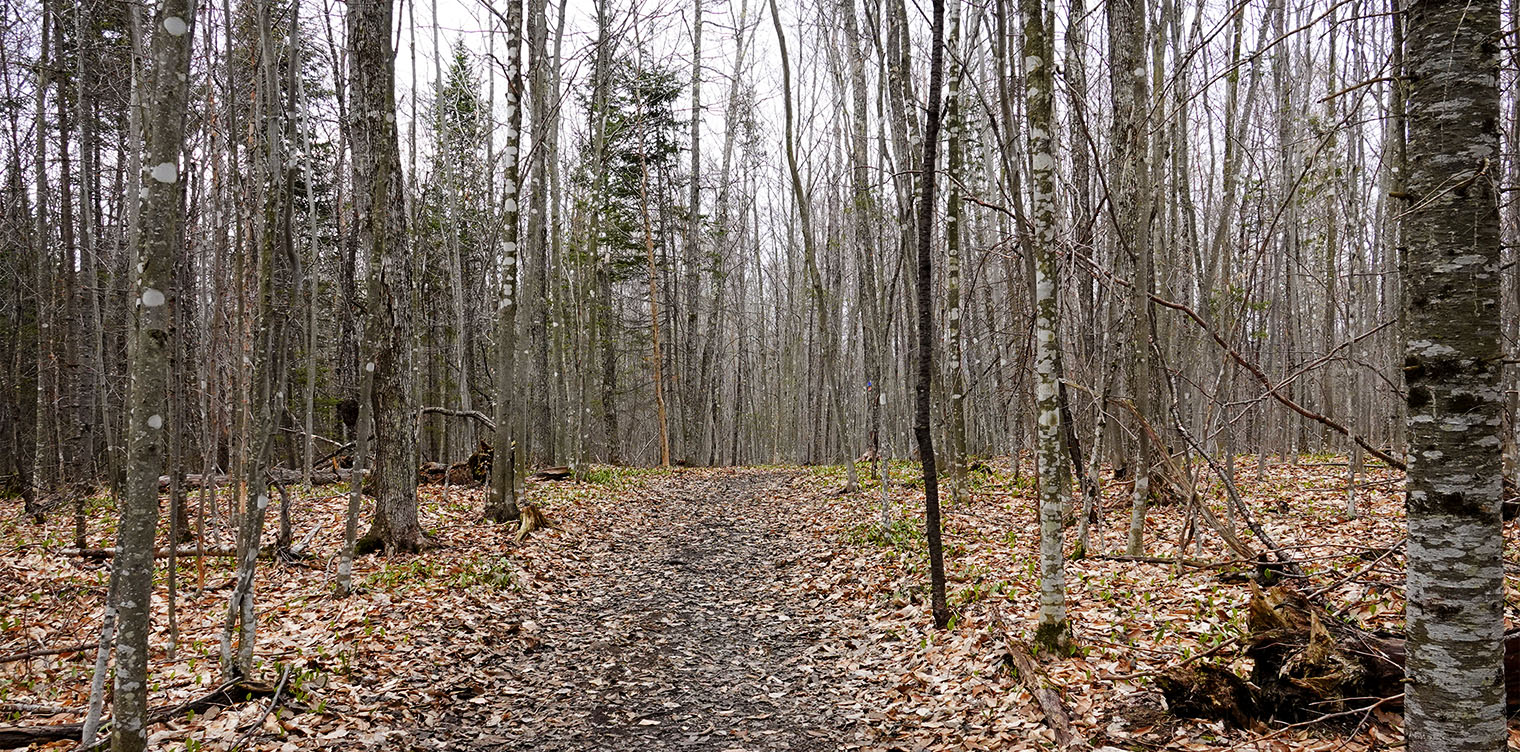
Trout Lilies are most commonly found in fairly well-drained soil under deciduous trees in mixed woods and northern hardwood forests. They also grow at higher elevations in mountain conifer forests. This species can also be seen along streams and the slopes of ravines. Trout Lilies prefer dappled spring sunlight in moist, rich loamy soil with leaf litter and decaying organic matter. This species sometimes forms large colonies, with only a small percentage of the plants flowering in any given year.
In the Adirondack Mountains, Trout Lilies are found in several ecological communities, including:
The beech-maple mesic forest, for instance, is a northern hardwood forest dominated by Sugar Maple and American Beech, usually located on moist, well-drained soils. Yellow Birch and Red Maple are often present.
- The understory in this ecological community often includes Hobblebush and Striped Maple.
- Characteristic wildflowers, in addition to the spring-blooming Trout Lily, include Canada Mayflower, Common Wood Sorrel, Jack-in-the-pulpit, Wild Sarsaparilla, Starflower, Foamflower, Indian Cucumber-root, and Purple Trillium.
- Characteristic ferns include woodferns, Christmas Fern, and Hay-scented Fern.
- Characteristic birds include Red-eyed Vireo, Ovenbird, Black-throated Blue Warbler, and Black-throated Green Warbler.
Trout Lilies grow along many of the trails covered here. Look for them in early spring under deciduous trees along many of the trails at the Paul Smith's College VIC, including the Boreal Life Trail and the Jenkins Mountain Trail. You can also find them along the Heart Lake Trail, Henry's Woods Trails, and Peninsula Nature Trails, in the mixed forest areas of Hulls Falls Road, and along many of the trails at Heaven Hill.
References
Michael Kudish. Adirondack Upland Flora: An Ecological Perspective (The Chauncy Press, 1992), pp. 23-28, 229-230.
New York Flora Association. New York Flora Atlas. Yellow Trout Lily. Erythronium americanum Ker Gawl. ssp. americanum. Retrieved 26 January 2018.
Integrated Taxonomic Information System. Erythronium americanum ssp. americanum Ker Gawl. Retrieved 26 January 2018.
United States Department of Agriculture. The Plants Database. Dogtooth Violet. Erythronium americanum Ker Gawl. ssp. americanum. Retrieved 26 January 2018.
Flora of North America. Erythronium americanum subsp. americanum. Retrieved 26 January 2018.
NatureServe Explorer. Online Encyclopedia of Life. Yellow Trout-lily. Erythronium americanum ssp. americanum. Retrieved 26 January 2018.
Margaret B. Gargiullo. A Guide to Native Plants of the New York City Region (New York City Department of Parks & Recreation, 2007), p. 91.
Native Plant Trust. Go Botany. American Trout-lily. Erythronium americanum. Retrieved 28 December 2019.
New York State. Department of Environmental Conservation. New York Natural Heritage Program. Ecological Communities of New York State. Second Edition (March 2014), pp. 102, 119-120, 120-121. Retrieved 17 October 2015.
New York Natural Heritage Program. 2022. Online Conservation Guide for Beech-Maple Mesic Forest. Retrieved 17 February 2022.
New York Natural Heritage Program. 2022. Online Conservation Guide for Boreal Heath Barrens. Retrieved 17 February 2022.
New York Natural Heritage Program. 2022. Online Conservation Guide for Maple-Basswood Rich Mesic Forest. Retrieved 17 February 2022.
New York Natural Heritage Program. 2022. Online Conservation Guide for Mountain Fir Forest. Retrieved 17 February 2022.
New York State. Adirondack Park Agency. Preliminary List of Species Native Within the Adirondack Park Listed Alphabetically by Scientific Name and Sorted by Habit. Volume 1. Updated 10.23.2006, p. 21. Retrieved 26 January 2017.
USA National Phenology Network. Nature’s Notebook. Erythronium americanum. Retrieved 26 January 2018.
The New York Phenology Project. Dogtooth Violet. Erythronium americanum. Retrieved 26 January 2018.
Connecticut Botanical Society. Trout Lily. Erythronium americanum Ker-Gawl. Retrieved 26 January 2018.
Minnesota Wildflowers. Yellow Trout Lily. Erythronium americanum. Retrieved 27 January 2018.
Illinois Wildflowers. Yellow Trout Lily. Erythronium americanum. Retrieved 27 January 2018.
Eloise Butler Wildflower Garden. The Friends of the Wild Flower Garden. Yellow Trout-lily. Erythronium americanum Ker Gawl. Retrieved 27 January 2018.
Lady Bird Johnson Wildflower Center. Erythronium americanum Ker Gawl. Retrieved 27 January 2018.
iNaturalist. Adirondack Park Observations. Yellow Trout Lily. Erythronium americanum. Retrieved 17 February 2022.
Anne McGrath. Wildflowers of the Adirondacks (EarthWords, 2000), p. 78, Plate 22.
Roger Tory Peterson and Margaret McKenny. A Field Guide to Wildflowers. Northeastern and North-central North America (Houghton Mifflin Company, 1968), pp. 102-103.
Doug Ladd. North Woods Wildflowers (Falcon Publishing, 2001), p. 124.
Lawrence Newcomb. Newcomb's Wildflower Guide (Little Brown and Company, 1977), pp. 338-339.
David M. Brandenburg. Field Guide to Wildflowers of North America (Sterling Publishing Company, Inc., 2010), p.312.
Timothy Coffey. The History and Folklore of North American Wildflowers (FactsOnFile, 1993), pp. 303-304.
Ruth Schottman. Trailside Notes. A Naturalist's Companion to Adirondack Plants (Adirondack Mountain Club, 1998), pp. 38-42.
William Carey Grimm. The Illustrated Book of Wildflowers and Shrubs (Stackpole Books, 1993), pp. 50-51.
Wilbur H. Duncan and Marion B. Duncan. Wildflowers of the Eastern United States (The University of Georgia Press, 1999), pp. 164-165, Plate 576.
National Audubon Society. Field Guide to North American Wildflowers. Eastern Region. (Alfred A. Knopf, 2001), pp. 603-604, Plate 266.
William K. Chapman et al. Wildflowers of New York in Color (Syracuse University Press, 1998), pp. 90-91.
Gary Wade et al. Vascular Plant Species of the Forest Ecology Research and Demonstration Area, Paul Smiths, New York. USDA Forest Service. Research Note NE-380, p. 4. Retrieved 22 January 2017.
Mark J. Twery, et al. Changes in Abundance of Vascular Plants under Varying Silvicultural Systems at the Forest Ecosystem Research and Demonstration Area, Paul Smiths, New York. USDA Forest Service. Research Note NRS-169, p. 7. Retrieved 22 January 2017.
John Eastman. The Book of Forest and Thicket: Trees, Shrubs, and Wildflowers of Eastern North America (Stackpole Books, 1992), pp. 121-123.
Plants for a Future. Erythronium americanum. Retrieved 27 January 2018.
Steven Foster and James A. Duke. Medicinal Plants and Herbs of Eastern and Central North America (Houghton Mifflin Harcourt, 2014), pp. 114-115.
Lee Allen Peterson. A Field Guide to Edible Wild Plants. Eastern and Central North America (Houghton Mifflin Company, 1977), pp. 74-75.
Tom Seymour. Foraging New England: Edible Wild Food and Medicinal Plants from Maine to the Adirondacks to Long Island Sound. Second Edition (Morris Book Publishing, LLC, 2013), pp. 79-81.
University of Michigan. Native American Ethnobotany. A Database of Foods, Drugs, Dyes and Fibers of Native American Peoples, Derived from Plants. American Troutlily. Erythronium americanum. Retrieved 26 January 2018
Nancy G. Slack and Allison W. Bell. Adirondack Alpine Summits: An Ecological Field Guide (Adirondack Mountain Club, Inc., 2006), p. 19.
Allen J. Coombes. Dictionary of Plant Names (Timber Press, 1994), pp. 69-70.
Charles H. Peck. Plants of North Elba (Bulletin of the New York State Museum, Volume 6, Number 28, June 1899), p. 133. Retrieved 22 February 2017.
"Ker, John Bellenden (1765?-1842)," in Sidney Lee (ed), Dictionary of National Biography, Volume 31 (Macmillan and Co., 1892), pp. 52-53. Retrieved 26 January 2018.
